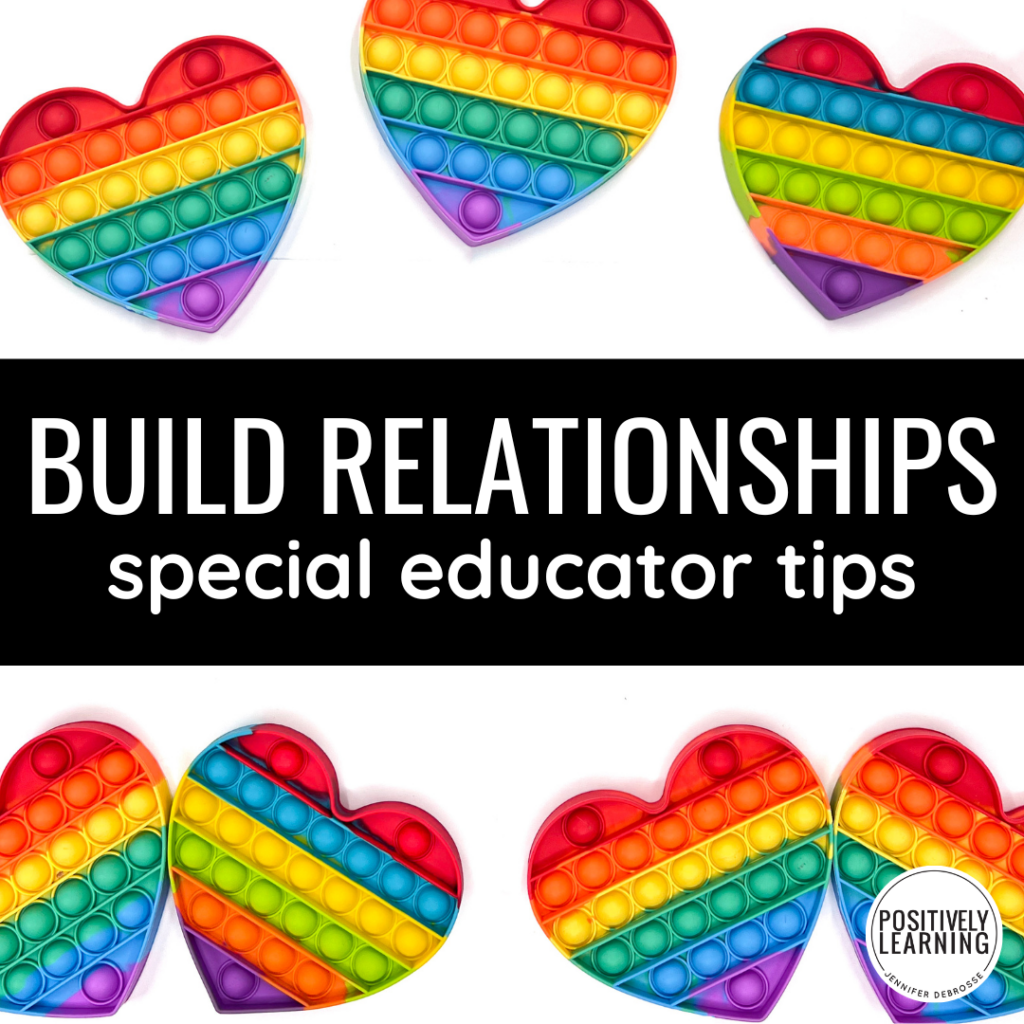
Every special educator knows the impact of positive relationships on the academic success and mental well-being of the students we work closely with. Building relationships is at the center of this balancing act, yet you may be left wondering – how exactly do we BUILD relationships?

Table of Contents
ToggleThis blogpost serves as a concrete guide to exactly how to build strong relationships and the best news? You're most likely doing many of these things already!
Greet students by name – sounds obvious, but it can be a challenge on the first week of school when you're meeting so many new people. Using name tags or a seating chart is a simple way to remember students’ names, making them feel valued. This seemingly small detail is one of the favorite ways for many great teachers to start building positive student-teacher relationships.
Understanding students’ interests is crucial. Initiate personal connections by sharing your own stories and interests. Making eye contact and greeting with a warm “good morning” goes a long way in nurturing good relationships.
I can't imagine a special educator NOT doing this, but it's still worth going through your classroom management system with fresh eyes. Can every component be delivered consistently every single day of the school year? If not, take some time to simplify your systems and expectations to ensure fairness. Our students will notice and appreciate these details!
Providing positive feedback can make a huge difference in student engagement. Recognize efforts, not just results. Positive reinforcement can lead to improved academic performance and positive behavior. If you feel like you're always running out of time to provide feedback in the moment, where can you build it into your instruction?
Attending a student’s extracurricular activities is a great way to engage on a personal level, but sometimes our schedules simply don't allow this. If that's the case, maybe making a quick note for yourself to check in the next day: ” Tell me about the play!” or “How was your soccer game?”
Whether you're working with young children or older students, active listening is a powerful tool in building relationships! I can't imagine any educator NOT wanting to use active listening when speaking with students, but it's also easier said than done. The biggest factor is usually awareness and TIME. This leads to the next tip…
A phone call home, especially when reporting good things, strengthens positive teacher-student relationships. It reinforces good behavior and highlights the extra effort put in by students.
But what about communication with our students? We know we can't always drop everything during instruction or when heading into a meeting, but we also want to let our students know they can come to us. How can we communicate with students and let them know that they can always approach us and we'll do our best to actively listen and be there for them. For me, this looked like morning arrival, lunch time, and dismissal. For others, it may be an email or a quick hallway chat.
If finding enough time to “do all the things” feels like a struggle, incorporating a regular classroom meeting can help. This is an opportunity for students to voice their opinions and concerns with you and each other. Students can feel part of the decision-making process which goes such a long way to building relationships within a classroom community.
If you work with very young students, here are some ideas to getting started with classroom meetings: Restorative Practice Circles
Students can fill out a “get to know you” survey. This can provide insight into their hobbies, interests, and backgrounds. Another idea is to incorporate preference assessments – this quick kit guides you through the exact process with all the student visuals included.
Pro Tip: It makes sense to include introductory activities like surveys and preference assessments at the beginning of the school year. I highly recommend repeating the exact same surveys later in the school year – maybe after winter break. Our students will enjoy it and we may learn something brand new!
Here's where we can get a bit creative! What special celebrations can you incorporate to build classroom community? Maybe it's a special way you celebrate student birthdays, or end-of-the-week ritual like Fun Fridays. Your students can help decide during your classroom meetings!

We all know the importance of building relationships with students right from the start. Hopefully this blogpost highlighted all the things you're ALREADY doing and maybe gave a few ideas to try out this school year.
From greeting students with “Have a great day” on Monday mornings to taking the extra time to help with homework assignments, these small details can make a huge impact on establishing a close relationship!
Which tip will you try out first?

I’m Jennifer and I was a special educator in the elementary school setting over the past decade. I entered the classroom every day dedicated to making learning inclusive AND engaging.

This website uses cookies to ensure you get the best experience on our website. See full disclosure here.
This website uses cookies to ensure you get the best experience on our website.
See full disclosure here.